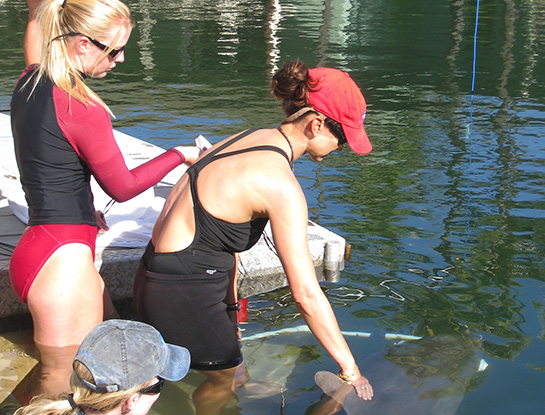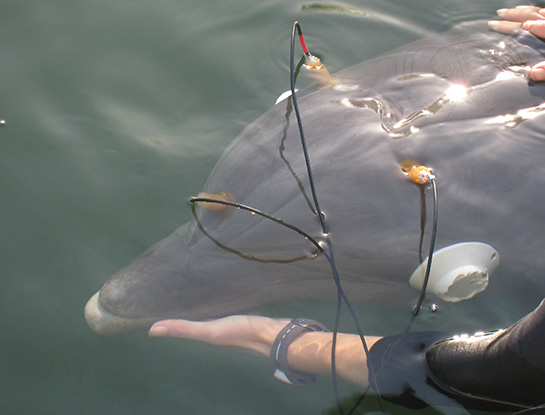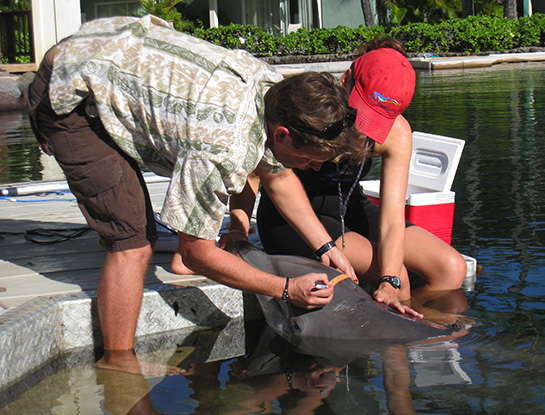Dolphin sound production
Dolphins and other toothed whales (odontocetes) use a wide range of clicks and tonal sounds for echolocation and communication. These sounds are not produced in the larynx, like in terrestrial mammals, but rather in a complex nasal system of air sacs, connective tissue and fat compartments in the animal’s head. The precise mechanism by which sounds are produced by odontocetes has been a hotly debated topic among scientists for decades. Understanding how dolphins produce sounds is important because it sheds light on their acoustic capabilities, in particular their sophisticated ability to sense the environment through echolocation. OSI has been engaged in research to investigate the sound production mechanisms of odontocetes in an effort to answer long-standing questions about how dolphins generate the pulses they employ for echolocation. These efforts began in 2007 in a research partnership with l’Oceanografic aquarium in Valencia, Spain. They continued between 2010-12 through a collaborative project with Dolphin Quest in Honolulu and Aarhus University in Denmark.
Products:
Lammers, M.O. and Castellote, M. (2009). “The beluga whale produces two pulses to form its sonar signal.” Biol. Lett. 5:297-301. DOWNLOAD PDF
Madsen, P.T., Lammers, M.O., Wisniewska, D.M. and Beedholm, K. (2013) “Sound production in echolocating delphinids (Tursiops truncatus and Pseudorca crassidens) is dynamic, but unilateral: clicking on the right side and whistling on the left side.” J. Exp. Biol. 216:4091-4102. DOWNLOAD PDF




